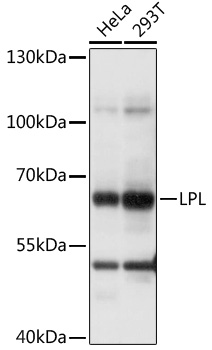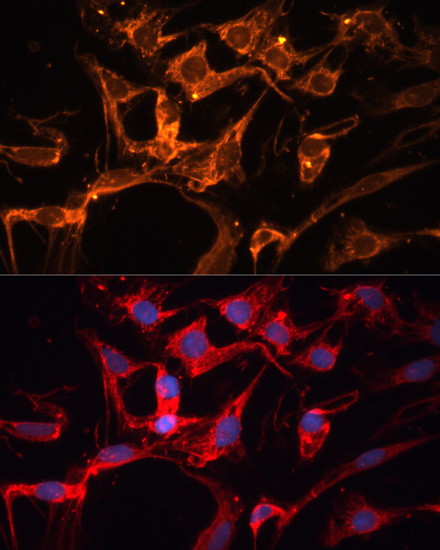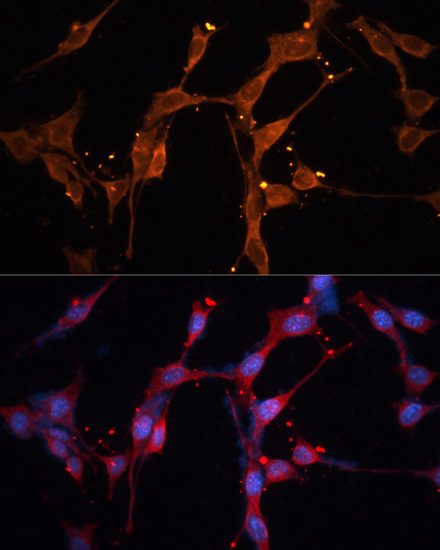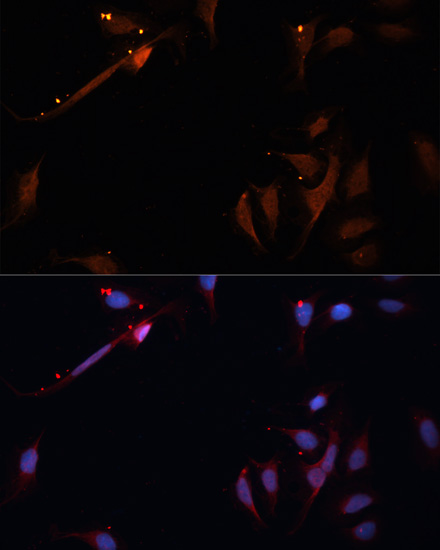-
Product Name
LPL Polyclonal Antibody
- Documents
-
Description
Polyclonal antibody to LPL
-
Tested applications
WB, IF
-
Species reactivity
Human, Mouse, Rat
-
Alternative names
LPL antibody; HDLCQ11 antibody; LIPD antibody; lipoprotein lipase antibody
-
Isotype
Rabbit IgG
-
Preparation
Antigen: Recombinant fusion protein containing a sequence corresponding to amino acids 124-475 of human LPL (NP_000228.1).
-
Clonality
Polyclonal
-
Formulation
PBS with 0.02% sodium azide, 50% glycerol, pH7.3.
-
Storage instructions
Store at -20℃. Avoid freeze / thaw cycles.
-
Applications
WB 1:500 - 1:2000
IF 1:50 - 1:200 -
Validations

Western blot - LPL Polyclonal Antibody
Western blot analysis of extracts of various cell lines, using LPL antibody at 1:1000 dilution.Secondary antibody: HRP Goat Anti-Rabbit IgG (H+L) at 1:10000 dilution.Lysates/proteins: 25ug per lane.Blocking buffer: 3% nonfat dry milk in TBST.Detection: ECL Basic Kit .Exposure time: 1s.

Immunofluorescence - LPL Polyclonal Antibody
Immunofluorescence analysis of C6 cells using LPL antibody at dilution of 1:100. Blue: DAPI for nuclear staining.

Immunofluorescence - LPL Polyclonal Antibody
Immunofluorescence analysis of NIH/3T3 cells using LPL antibody at dilution of 1:100. Blue: DAPI for nuclear staining.

Immunofluorescence - LPL Polyclonal Antibody
Immunofluorescence analysis of U-2OS cells using LPL antibody at dilution of 1:100. Blue: DAPI for nuclear staining.
-
Background
The primary function of this lipase is the hydrolysis of triglycerides of circulating chylomicrons and very low density lipoproteins (VLDL). Binding to heparin sulfate proteogylcans at the cell surface is vital to the function. The apolipoprotein, APOC2, acts as a coactivator of LPL activity in the presence of lipids on the luminal surface of vascular endothelium (By similarity).
Related Products / Services
Please note: All products are "FOR RESEARCH USE ONLY AND ARE NOT INTENDED FOR DIAGNOSTIC OR THERAPEUTIC USE"
